Nothing beats the taste of home-baked pizza covered in cheese and a layer of your favorite toppings. Unfortunately, making new dough every time you crave pizza can be a little hassle because of all the time and work that goes into it.

And perhaps this may leave you wondering, can you freeze pizza dough?
Short answer – yes, you can. In fact, pizza dough can stay in a freezer for up to three months. Just roll your dough into small balls, put it in freezer bags, and you can grab some any time you miss homemade pizza.
What Does Freezing Do To Your Pizza Dough?
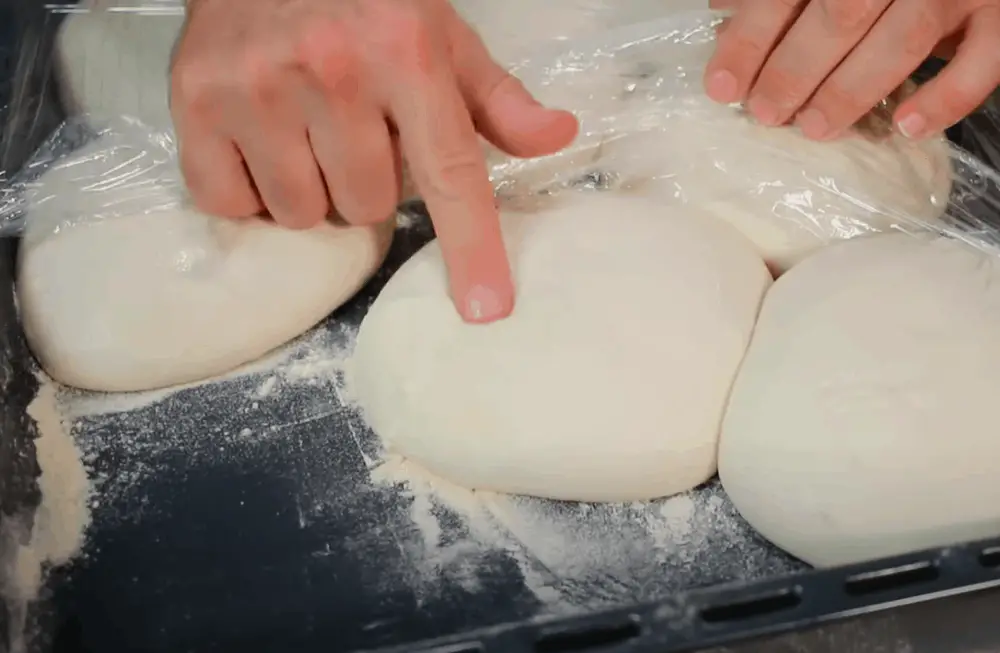
When you put your pizza dough at a low temperature, yeast activity slows down due to biochemical reactions. A real-life application looks like this:
- If you place the dough in the refrigerator, the yeast ability minimizes.
- If you put it in the freezer, it becomes completely inactive.
However, the yeast cell typically does not die at the temperatures commonly found in household freezers. As soon as the dough is taken out of the freezer and starts to defrost, the yeast reactivates and produces a gas that causes the dough to rise.
How To Freeze Pizza Dough
Follow these quick and easy steps to freeze your pizza dough. And you will have enough supply of dough for today, tomorrow, and days to come.
You will need:
- Pizza dough
- Freezer
- Freezer bags/plastic wrap
- Olive oil
- Marker pen
Step 1: Make Pizza Dough
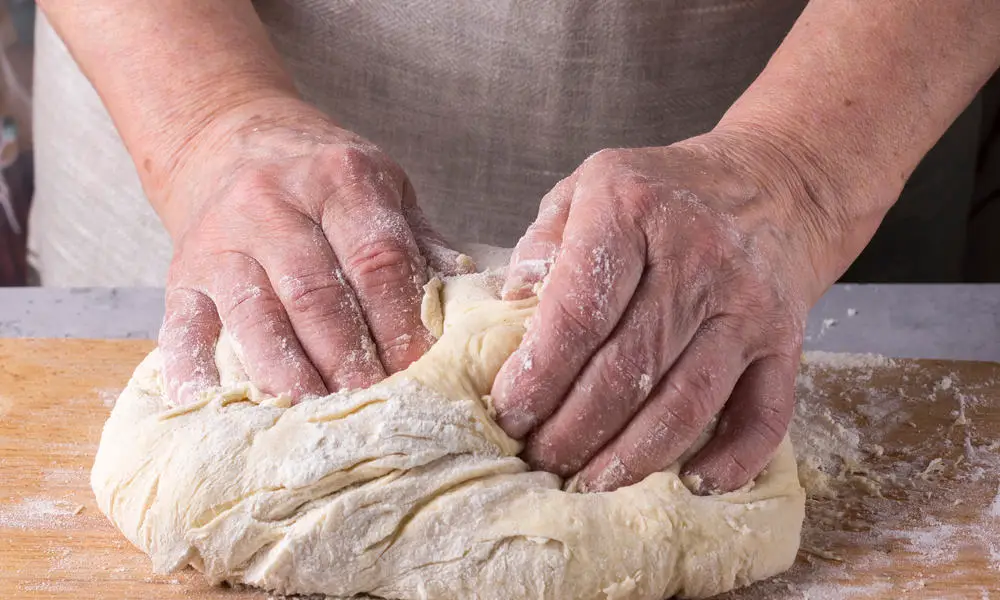
You can’t freeze pizza dough without having the dough in the first place. So, prepare your dough using the guidelines of your desired recipe.
And assuming you would like this dough to last you a while, it is best to choose a couple of recipes so you can have a different variety for each pizza day.
It could be as simple as the traditional four-ingredient Italian dough. Or maybe sprinkle some artistry by adding rosemary and red pepper. Either way, it freezes perfectly, given that you follow the measurements correctly.
Step 2: Allow The Dough To Rise
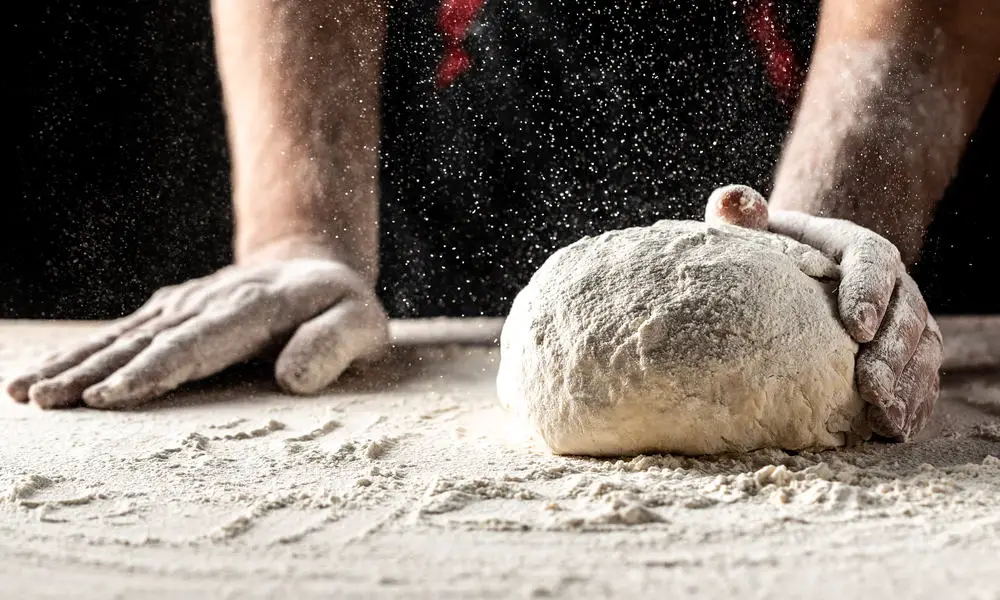
Once you have pounded your pizza dough, avoid immediately cutting it into packaging pieces. Give it time to ferment as one piece. Allowing your dough to ferment in bulk helps enhance its flavor.
With fermenting, you have two options. One is to leave it for two hours on your kitchen counter. Or two, place it in the fridge for a day.
Some people, however, freeze their dough before it has had a chance to ferment. But (in all honesty), no rule dictates whether doing it before is better than doing it after.
You can choose whichever option works for you. All you need to do is mark the dough to know whether it needs fermenting when thawed or whether it’s ready to spread out into a pizza.
For future convenience, allow the dough to ferment before freezing. That way, you won’t have to wait for it to rise when rolling it into a crust.
Step 3: Shape The Dough Into Balls
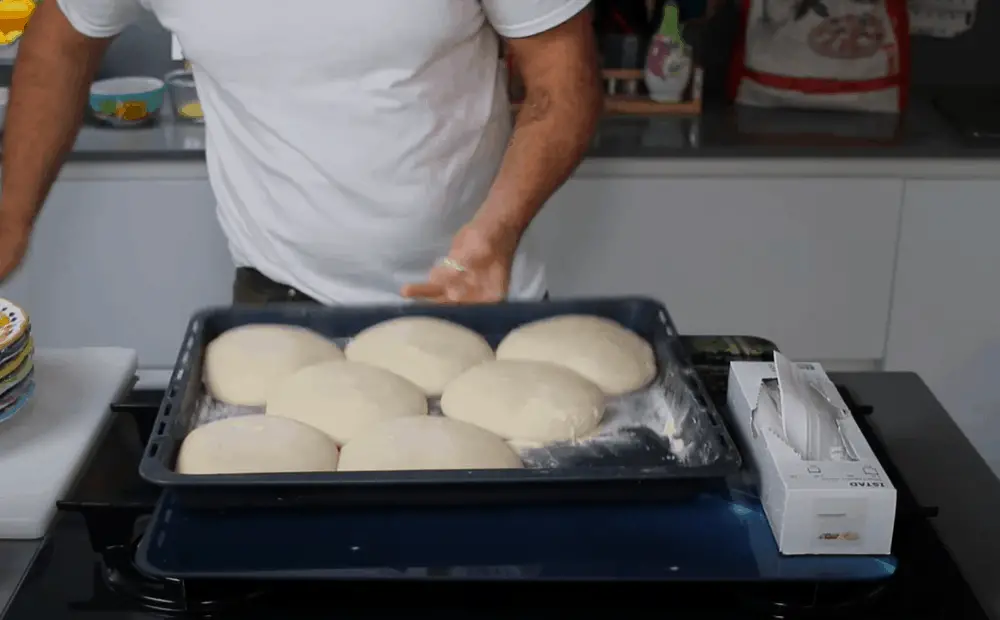
After your pizza dough has fermented, cut it into small balls. How many balls you make will depend on your specific recipe. Make sure each ball is the appropriate size for the crust you intend to make in the future.
If you’re unsure how much to slice, use a kitchen scale. For a 12-inch thin-crust pizza, you’ll need at least 225 grams of dough. But if you want a personal size, 180 grams is enough.
Step 4: Oil The Balls
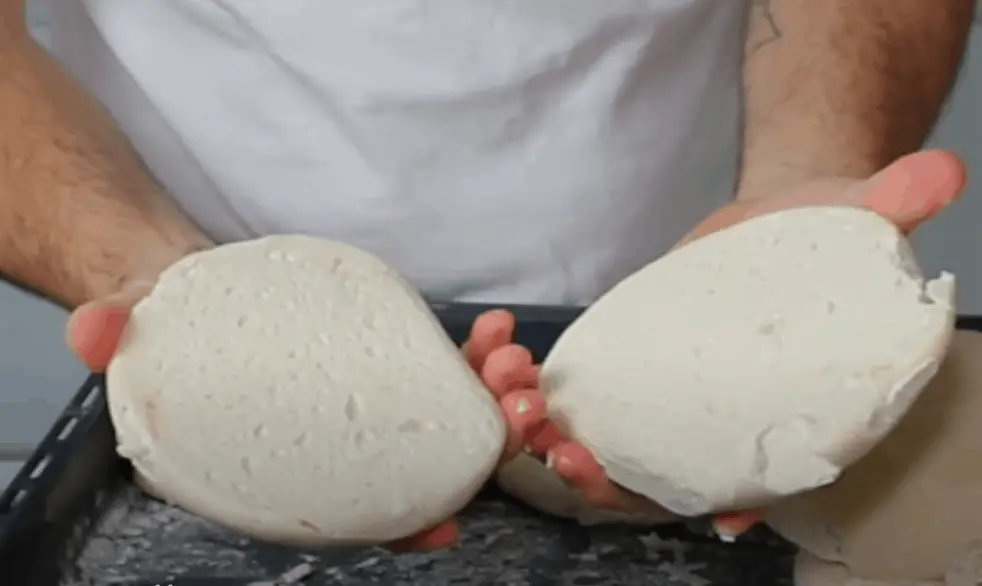
If you’re not using the dough right away, it is best to oil it before packaging. It will make it easier to pull out of the freezer bag once it has defrosted.
You can apply a light coat of olive oil, a spritz of baking spray, or use your favorite cooking oil.
Step 5: Bag Up
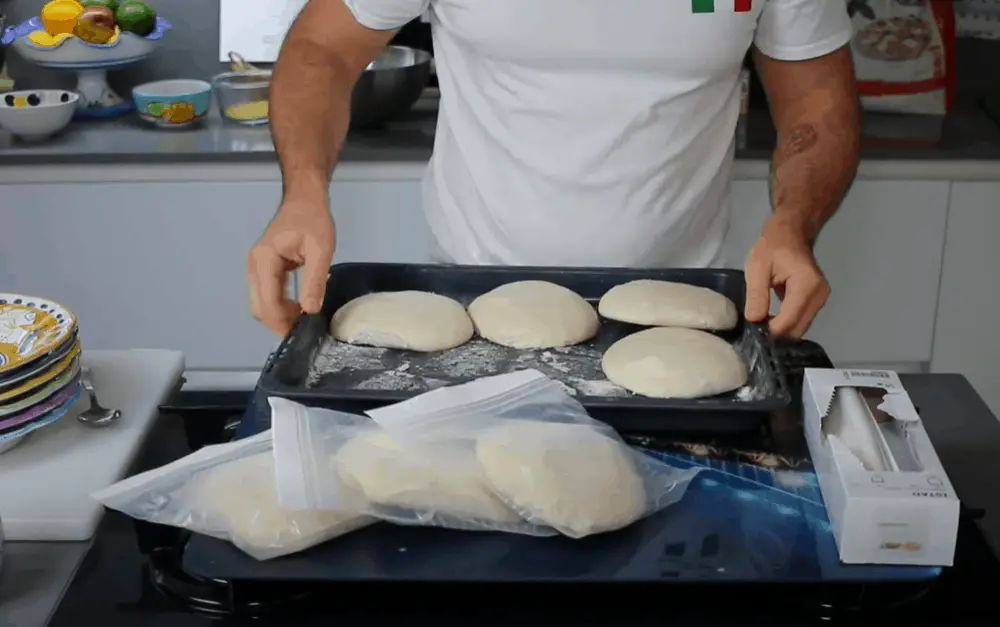
Put your balls of dough in a freezer bag and close it or wrap them up with a cling film. We recommend storing each ball in a separate bag so they don’t freeze on each other.
Also, here’s a tip to keep track of your supplies. Use a marker pen to label the contents. Ensure the tag has a date and a note to say whether the balls need fermenting before baking or not.
Step 6: Store In The Freezer
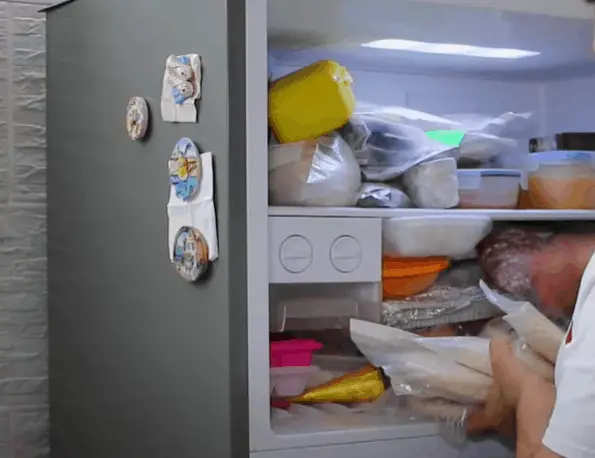
After wrapping, put your dough balls in the freezer. While they can stay in the freezer for a while, it’s best to use them within three months.
Now we do not doubt that you know (for sure) you can freeze your pizza dough for future use. And as you can see, it is a simple and manageable process. It should work for any recipe and floor type.
How To Defrost Frozen Pizza Dough
On the day you wish to bake your pizza, transfer the dough from the freezer to the refrigerator and let it sit for about 12 hours.
Once this time has elapsed, remove the dough from the fridge and place it on the kitchen counter. Leave it there for about 30 minutes to come to room temperature.
If you can’t wait for 12 hours, you can defrost the dough in a container of cold water. But always ensure it is still properly sealed and the water is changed every 30 minutes.
You can also thaw your dough on your kitchen counter. It will take about 2 ½ hours for the balls to defrost thoroughly. However, refrigeration is a must after this period to prevent bacteria growth.
After your pizza dough has thawed adequately, take it out of the freezer bag and spread it into a crust. If you have not fermented your dough before freezing, now is the time to do it.
Why so? You’ll get a dense-tasting flatbread with tiny air pockets if you don’t give it enough time to proof.
Will Freezing Change The Texture Or Taste Of Your Pizza?

How freezing works is that it converts the moisture in the dough into ice, causing it to expand. Over time, these ice crystals can break through the walls of the dough cells, slightly changing the texture of the dough.
So, yes, freezing can change the texture of your pizza balls, meaning fresh dough is, to some extent, always a better option texture-wise.
The taste of your dough, on the other hand, will remain unchanged. Unless there is an instance of incorrect sealing when wrapping the dough. Some situations include the dough getting contaminated by other foods in the freezer.
Generally, your dough should taste just as good as it did the first time you made it.
Can You Refreeze Your Pizza Dough After Thawing?
No, you cannot. After you have frozen your pizza dough once and put it out to defrost, it is a bad practice to put it back in the freezer.
Why?
The yeast fermenting the dough is usually dormant while in the freezer. But once the dough moves to a higher temperature, this fungus revives quickly. And it goes back to its job of converting sugars into alcohol and carbon dioxide.
If the dough is left to sit at room temperature for too long, say 6 to 12 hours, it will quickly become sour and develop a coarse texture, which will lead to a considerable loss in quality.
Now, if you put this dough back into the freezer, the dough’s texture and flavor may be adversely affected when you use it the next time.
Sure, the fermentation process will stop as soon as the dough adjusts to the freezer temperature, but the sour taste and the hard texture the dough acquired while outside won’t go away.
And while the resulting pie may still be safe to eat, working the dough itself will be a challenging task, as repeated freezing and thawing processes can affect the dough’s moisture and elasticity.
If you are thawing your dough at room temperature, guarantee not to leave it outside for more than 2 ½ hours. It is especially true if you suspect you won’t be using it all to make the crust.
Tips To Remember When Freezing Your Pizza Dough
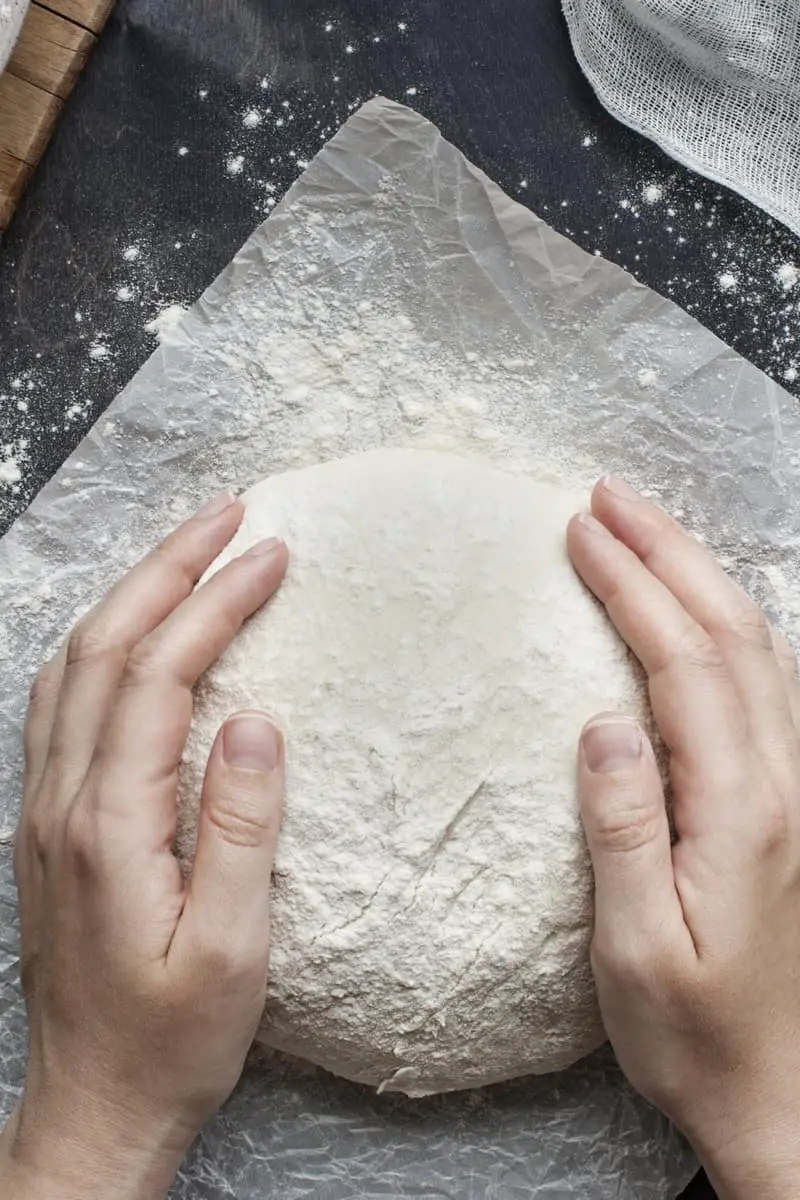
While freezing pizza dough is a fairly easy task, there are a few things you should keep in mind to get the most out of the process. Read on!
Keep Dough Balls Away From Strong Foods
Robust-smelling foods, like fish and meat, should be stored farther away from your pizza balls to avoid tainting the smell or taste of the dough. If your freezer has compartments, you can use one section to store the dough and another for the smelly foods.
If you have to store these two together, make sure to seal the dough properly. You could even put the bagged dough in a separate air-tight container.
Another known technique is to open a box of baking soda and transfer it into deodorizing packages. This cleaning solution can get rid of pesky odors for about three days. So always swap the old ones to maintain a clean freezer.
Ferment At Least Once
If you don’t allow your pizza dough to rise, you will end up with flat, lifeless dough. So decide whether you want to ferment your dough before or after freezing.
Thaw Slowly
Don’t try to speed up the defrosting process. Or you will ruin the dough texture and the resulting pizza. Let the dough thaw slowly and steadily, preferably in the refrigerator.
Secure The Packaging
Packing up the dough is one of the most crucial parts when freezing it for later. If you’re using a plastic storage bag, like Ziploc, allow the air to go out before sealing. Squeezing excess air can prevent the dough from drying out.
Additionally, it can avoid what we call freezer burn. Some signs include white and brown spots on the dough. Although it’s normal, you still need to watch out for this as it can reduce the taste. But don’t worry, it is safe to eat and won’t affect your health.
While for those using an airtight container, always leave some headspace for the ball to expand. You don’t want to restrict the carbon dioxide from inflating the dough!
The Takeaway
If you came here because you were wondering whether you can freeze your pizza dough, now you know the answer. Freezing pizza dough is a convenient way of speeding up your pizza-making process.
Simply cut the dough into small balls, put it in bags, and throw it in the freezer. And when it’s time to cook, leave it to thaw slowly in the fridge, and don’t let it sit too long on the kitchen counter.
Do you still have questions regarding freezing pizza dough? Type it down in the comment section so we can attend to your queries.


Barbara is an enthusiastic food-exploring person that goes through different culinary experiences. She got inspired by creating a pizza blog post after she tasted one of the best-selling pizzas in Toledo.